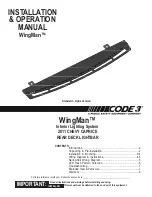
Location of the Tire Label
(Placard)
▼
Location of the Tire Label (Placard)
You will find the tire label containing tire
inflation pressure by tire size and other
important information on the driver's side
B-pillar or on the edge of the driver's door
frame.
SAMPLE
▼
Recommended Tire Inflation
Pressure
On the tire label you will find the
recommended tire inflation pressure in
both kPa and psi for the tires installed as
original equipment on the vehicle. It is
very important that the inflation pressure
of the tires on your vehicle is maintained
at the recommended pressure. You should
check the tire pressure regularly to insure
that the proper inflation pressure is
maintained.
Refer to Tires on page 9-9.
NOTE
Tire pressures listed on the vehicle placard
or tire information label indicate the
recommended cold tire inflation pressure,
measured when the tires are cold, after the
vehicle has been parked for at least 3
hours. As you drive, the temperature in the
tire warms up, increasing the tire pressure.
WARNING
Always check the tire inflation pressures on
a regular basis according to the
recommended tire inflation pressure on the
tire label and in conjunction with the
information in this owner's manual:
Driving your vehicle with under-inflated
tires is dangerous.
Under-inflation is the most common cause
of failures in any kind of tire and may result
in severe cracking, tread separation or
“blowout”, with unexpected loss of vehicle
control and increased risk of injury.
Under-inflation increases sidewall flexing
and rolling resistance, resulting in heat
buildup and internal damage to the tire. It
results in unnecessary tire stress, irregular
wear, loss of control and accidents. A tire
can lose up to half of its air pressure and
not appear to be flat!
It is impossible to determine whether or not
tires are properly inflated just by looking at
them.
▼
Checking Tire Pressure
1. When you check the air pressure, make
sure the tires are cold ―meaning they
are not hot from driving even a mile.
2. Remove the cap from the valve on one
tire.
3. Firmly press a tire gauge onto the
valve.
4. Add air to achieve recommended air
pressure.
5. If you overfill the tire, release air by
pushing on the metal stem in the center
of the valve. Then recheck the pressure
with your tire gauge.
6. Replace the valve cap.
Customer Information and Reporting Safety Defects
Tire Information (U.S.A.)
8-26
Mazda3_8HE9-EA-18K_Edition1
2018-10-17 19:05:10
Содержание 3 2019
Страница 4: ...Mazda3_8HE9 EA 18K_Edition1 2018 10 17 19 05 10 ...
Страница 14: ...MEMO 1 10 Mazda3_8HE9 EA 18K_Edition1 2018 10 17 19 05 10 ...
Страница 143: ...MEMO 4 3 Mazda3_8HE9 EA 18K_Edition1 2018 10 17 19 05 10 ...
Страница 476: ...MEMO 6 52 Mazda3_8HE9 EA 18K_Edition1 2018 10 17 19 05 10 ...
Страница 526: ...MEMO 7 50 Mazda3_8HE9 EA 18K_Edition1 2018 10 17 19 05 10 ...
Страница 570: ...MEMO 8 44 Mazda3_8HE9 EA 18K_Edition1 2018 10 17 19 05 10 ...
Страница 573: ... Engine Number 1 Forward Specifications Identification Numbers 9 3 Mazda3_8HE9 EA 18K_Edition1 2018 10 17 19 05 10 ...
Страница 581: ...10 Index 10 1 Mazda3_8HE9 EA 18K_Edition1 2018 10 17 19 05 10 ...
Страница 591: ...10 11 Mazda3_8HE9 EA 18K_Edition1 2018 10 17 19 05 10 ...
Страница 592: ...10 12 Mazda3_8HE9 EA 18K_Edition1 2018 10 17 19 05 10 ...
















































